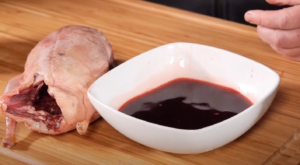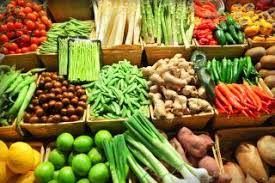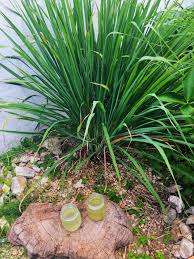Incorporating Wild Game Into Natural Recipes
Wild game meats offer a rich, flavorful, and sustainable alternative to store-bought meats, bringing variety and nutrition to the kitchen. These natural meats are typically leaner, free from additives, and reflect the wild diets of the animals themselves. For adventurous home cooks and hunters alike, wild game opens the door to unique culinary experiences. Some of the most interesting wild game meats include venison (deer), elk, wild boar, rabbit, duck, and goose. Each has its own texture and taste profile, often more robust than their farm-raised counterparts, making them ideal for hearty, rustic dishes or creative gourmet fare.
Goose, Duck, Waterfowl
 Goose, in particular, is a standout among wild game birds. Its dark, rich meat is often compared to beef more than chicken or turkey, and it lends itself well to curing and smoking. One of the most intriguing preparations is goose pastrami—a twist on the traditional beef version. For those wondering how to make goose pastrami, its not as intimidating as it may sound. Making goose pastrami involves a few key steps: brining, seasoning, and smoking. First, the breasts are soaked in a brine for several days. A typical brine might include water, kosher salt, sugar, garlic, crushed juniper berries, coriander, and black peppercorns, with a bit of pink curing salt to preserve color and flavor. After brining, the meat is rinsed, patted dry, and coated in a spice rub—usually heavy on cracked black pepper and coriander. Then, it’s smoked low and slow until it reaches a safe internal temperature, often around 150°F. Once cooled and sliced thin, goose pastrami is incredibly flavorful and makes an excellent sandwich meat or charcuterie board feature.
Goose, in particular, is a standout among wild game birds. Its dark, rich meat is often compared to beef more than chicken or turkey, and it lends itself well to curing and smoking. One of the most intriguing preparations is goose pastrami—a twist on the traditional beef version. For those wondering how to make goose pastrami, its not as intimidating as it may sound. Making goose pastrami involves a few key steps: brining, seasoning, and smoking. First, the breasts are soaked in a brine for several days. A typical brine might include water, kosher salt, sugar, garlic, crushed juniper berries, coriander, and black peppercorns, with a bit of pink curing salt to preserve color and flavor. After brining, the meat is rinsed, patted dry, and coated in a spice rub—usually heavy on cracked black pepper and coriander. Then, it’s smoked low and slow until it reaches a safe internal temperature, often around 150°F. Once cooled and sliced thin, goose pastrami is incredibly flavorful and makes an excellent sandwich meat or charcuterie board feature.
Popular Venison Choices
Venison is perhaps the most popular wild game meat, and it’s remarkably versatile. Because it’s lean, cooking methods that preserve moisture—like braising, marinating, or serving medium-rare—are key. Venison backstrap (loin) is a prized cut and can be grilled or seared simply with garlic, rosemary, and butter. Ground venison can be used in chili, meatballs, or tacos, offering a gamey twist on comfort foods. Elk, similar to venison but often milder in flavor, works well in steaks, roasts, and jerky, and it’s especially good when slow-cooked with red wine, onions, and root vegetables.
Wild Boar Options
Wild boar adds a deeper flavor compared to domestic pork, with slightly sweeter and nuttier notes. It’s fantastic in sausages, stews, and ragùs. Rabbit is another excellent wild game option, with a taste often described as a cross between chicken and turkey. It’s commonly stewed or braised—try a rabbit and mushroom fricassée or classic rabbit cacciatore. Wild duck, especially mallard or teal, offers a bold, earthy flavor perfect for pan-searing and pairing with fruit glazes or reduction sauces.
Cooking wild game can be both a sustainable lifestyle choice and a culinary adventure. By using whole animals or less common cuts, home chefs can get creative while respecting the harvest. Whether you’re smoking goose pastrami, slow-roasting venison, or simmering wild boar, these natural meats provide rich flavors and a deep connection to nature and tradition that store-bought meat simply can’t match.


 We all want what is best for ourselves and our families. This is why many people are turning to the idea of “all natural” products. From foods to bug repellents, it is all available in a natural form. The truth is, nature gives us everything we need, not chemicals.
We all want what is best for ourselves and our families. This is why many people are turning to the idea of “all natural” products. From foods to bug repellents, it is all available in a natural form. The truth is, nature gives us everything we need, not chemicals. Natural foods are typically considered organic. It is usually meant to imply that your foods have not been processed and that they contain no chemicals to help them grow or to keep pests away. Basically, the fertilizers that are used are mulches and other types of soil enrichment rather than a bag of powder or rocks that contains additives.
Natural foods are typically considered organic. It is usually meant to imply that your foods have not been processed and that they contain no chemicals to help them grow or to keep pests away. Basically, the fertilizers that are used are mulches and other types of soil enrichment rather than a bag of powder or rocks that contains additives. No matter where you are in the world, there are local produce options. Farmers and farms of all sizes can be found in every part of the US and beyond. Even if you live in a city, there are still going to be farms outside of the city limits as well as maybe produce stands inside of it.
No matter where you are in the world, there are local produce options. Farmers and farms of all sizes can be found in every part of the US and beyond. Even if you live in a city, there are still going to be farms outside of the city limits as well as maybe produce stands inside of it.